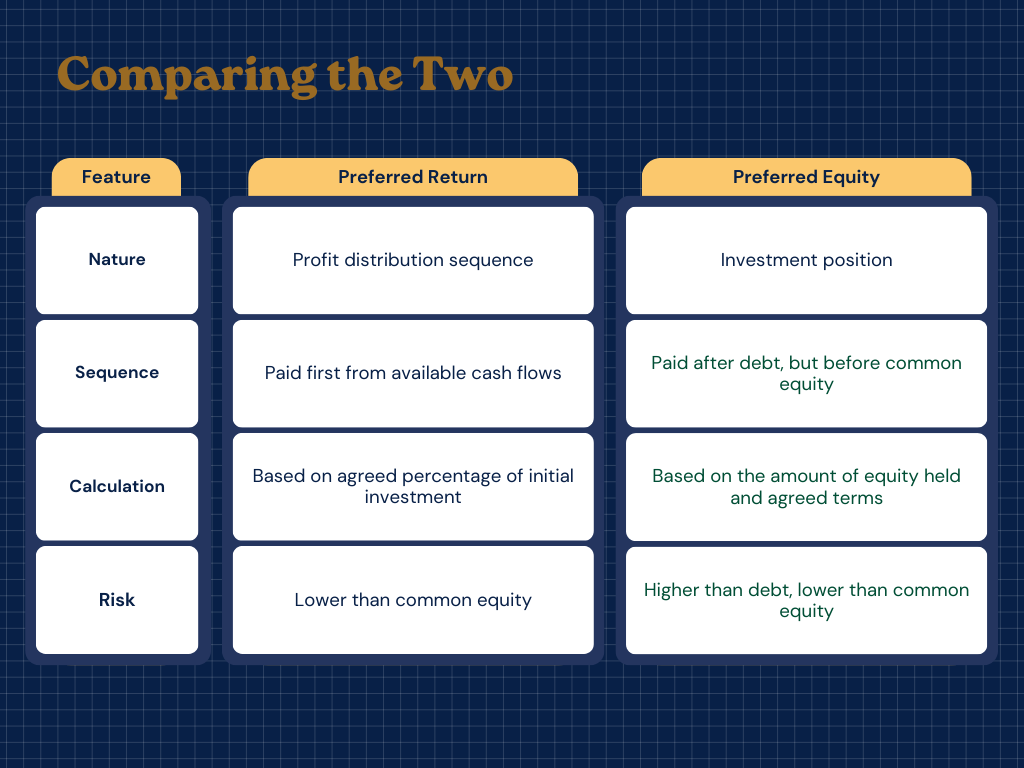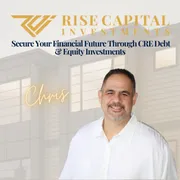Rise Capitals Articles To Educate And Inspire

Preferred Return vs. Preferred Equity: Clarifying Common Investment Confusions
"Patience is the key to paradise." — Turkish Proverb
Just as this proverb highlights the virtue of patience for eventual reward, in real estate investment, particularly when dealing with preferred returns, investors may need to exercise patience before they see their expected annual returns fully realized.
In the realm of real estate investment, terminology matters. Two terms that often cause confusion, even among seasoned players, are “preferred return” and “preferred equity.” They sound similar but are fundamentally different concepts with distinct implications for investors.
Preferred Return: A Priority Profit Share
Preferred return is a term that refers to the priority sequence of profit distribution to investors. It's the first slice of the pie that goes out before anyone else gets a share. Here’s how it works:
Example Calculation:
Imagine an investment opportunity that advertises a 7% preferred return. If you invest $100,000, theoretically, you're in line to receive $7,000 annually before any profit-sharing or incentives are distributed to the deal’s sponsors. However, it's important to note that in some cases, the preferred return may be accrued and paid out in later years, particularly if the property's initial cash flow isn't sufficient to cover the preferred return immediately.
Impact on Investments:
Preferred returns are attractive to investors because they offer a degree of protection. Investors are reassured that they will receive their agreed-upon return before the profits are divided according to ownership stakes or performance incentives.
Preferred Equity: A Step Above Common Equity
Preferred equity is a type of investment that is senior to common equity but junior to debt. It stands in line before common equity holders when it comes to profit distribution and, in the event of liquidation, asset distribution. Here’s how it plays out:
Example Calculation:
Let's say a property is sold and, after paying off senior debt, there's $1 million left to distribute. If you hold $200,000 in preferred equity, you will receive your share before common equity holders get theirs. This does not mean you get $200,000 back; it means your claim is prioritized up to the amount of your investment, usually with an agreed-upon return.
Impact on Lending:
Preferred equity can affect lending decisions. Because it's senior to common equity, lenders might view the investment as having a lower equity cushion, potentially leading to stricter lending terms. However, preferred equity does not have the same seniority as a debt and does not grant holders the same claim to assets as a mortgage would.

Investor Implications:
For an investor, preferred return might mean a fixed return on investment, paid out before the profits are shared more broadly. Preferred equity, on the other hand, implies a more prominent place in the pecking order of investment returns, which can be crucial if the venture doesn’t go as well as planned.
Syndicator Considerations:
For syndicators, offering a preferred return can make an investment opportunity more attractive. On the flip side, allocating preferred equity can make larger deals more feasible by providing a clearer hierarchy of payment and offering a different risk-return profile to attract a broader investor base.
In conclusion, understanding the distinction between preferred return and preferred equity is crucial. They both have a place in the investment landscape, offering different levels of risk, return, and priority in the capital stack. As an investor, it's essential to understand these terms to align your financial goals with the right investment opportunities. For those looking to structure deals, these tools can be leveraged to create appealing and balanced investment offerings.
As we demystify these terms, we empower new and experienced investors alike to make informed decisions and build a solid foundation for their investment journey. Remember, in real estate investment, knowledge truly is power.

